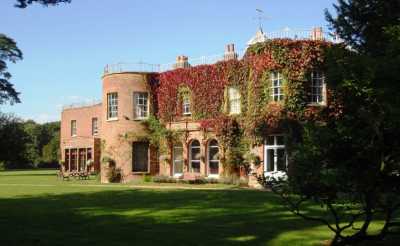The Relationships between Dance and other Arts
The Call for Papers has already gone out for next year’s Biennial Conference, under the stewardship of Barbara Segal. The range of topics should be wide, offering many a chance for our learned speakers to place early dance in its cultural context on all fronts.
Once again, we have searched for an appropriate but affordable venue. Seldom an easy task! However this time we are able to offer those who attend a “country house” weekend. St Katharine’s, Parmoor, is an historic house standing in 12 acres of grounds in the Chilterns. Once a private home, its peaceful and relaxed atmosphere should make it ideal for a residential weekend.
The History of St Katharine’s
In 1995, the nuns of the order of St Katharine of Alexandria gave the house and grounds, now a Grade 2 Listed Building, to Lady Ryder, better known as Sue Ryder. It became The Sue Ryder Prayer Fellowship, an independent charity dedicated to the needs of others. People from all walks of life visit Parmoor.
An ancient Cedar of Lebanon recalls the fact that the estate was once owned by the Knights Templar and the legend is that the tree grew from a seed collected from the Lebanon during the Crusades.
What was probably a farmhouse passed through the Saunders family in the 16th century to the Doyles in 1603, with whom it remained for 200 years. They created a large brick and flint manor house and later added a Georgian extension.
In 1860, Henry William Cripps QC acquired it as a family home for his family of 10 children. However, he remodelled the house completely. The only relics of the older house are one brick and flint wall, the oak beams in the kitchen and the oak used for the banisters and newels in the hall staircase and some of the bookcases in the library.
Charles Alfred Cripps QC, a politician, used the house to entertain the ‘great and the good’ of the day. He added a large banqueting hall with a suite of guest rooms above, panelled the dining room, embellished the staircase with a large stained glass window and remodelled the entrance.
King Zog of Albania
Parmoor House has had a colourful life. When Lord Parmoor died in 1941, Parmoor House was let to King Zog of Albania (1895-1961), who had been forced into exile when Mussolini invaded Albania in 1939. King Zog lived at Parmoor with his Hungarian wife, Queen Geraldine, their young son Prince Leka, members of his family, their servants, bodyguards and pets. His retainers lived in Little Parmoor down the road, and his Ministers and their families were billeted to houses around Lane End. Along with his retinue, King Zog also arrived with seven crates of gold which were probably stored in a small strong room in the cellar. Parties were held at the house for government officials and sometimes other exiled heads of state, including General De Gaulle and Queen Beatrix of the Netherlands. In 1946, however, King Zog moved to Egypt. As far as we know, the crates of gold went with him.
On February 11th 1947 the second Lord Parmoor sold the house and 12 acres to the Anglican Community of St. Katharine of Alexandria. They remained for 51 years.
THE HOUSE & GROUNDS
Those attending the EDC Conference next April will enter a panelled Entrance Hall, with antique furniture, a grand piano and stained glass windows. Hopefully, in April we will not need the log fire. The large Main Hall will be used for our papers and workshops, as well as for a dance on the Saturday evening. We are free to stroll around the grounds, or find a quiet corner to enjoy the peaceful atmosphere. There is an orchard, a pond (with ducks), a formal garden and a walled garden being developed to provide vegetables, fruit and flowers for the house.
In 2016, then, we can look forward to another stimulating and enjoyable Conference in a romantic setting with a tale of its own to tell.
